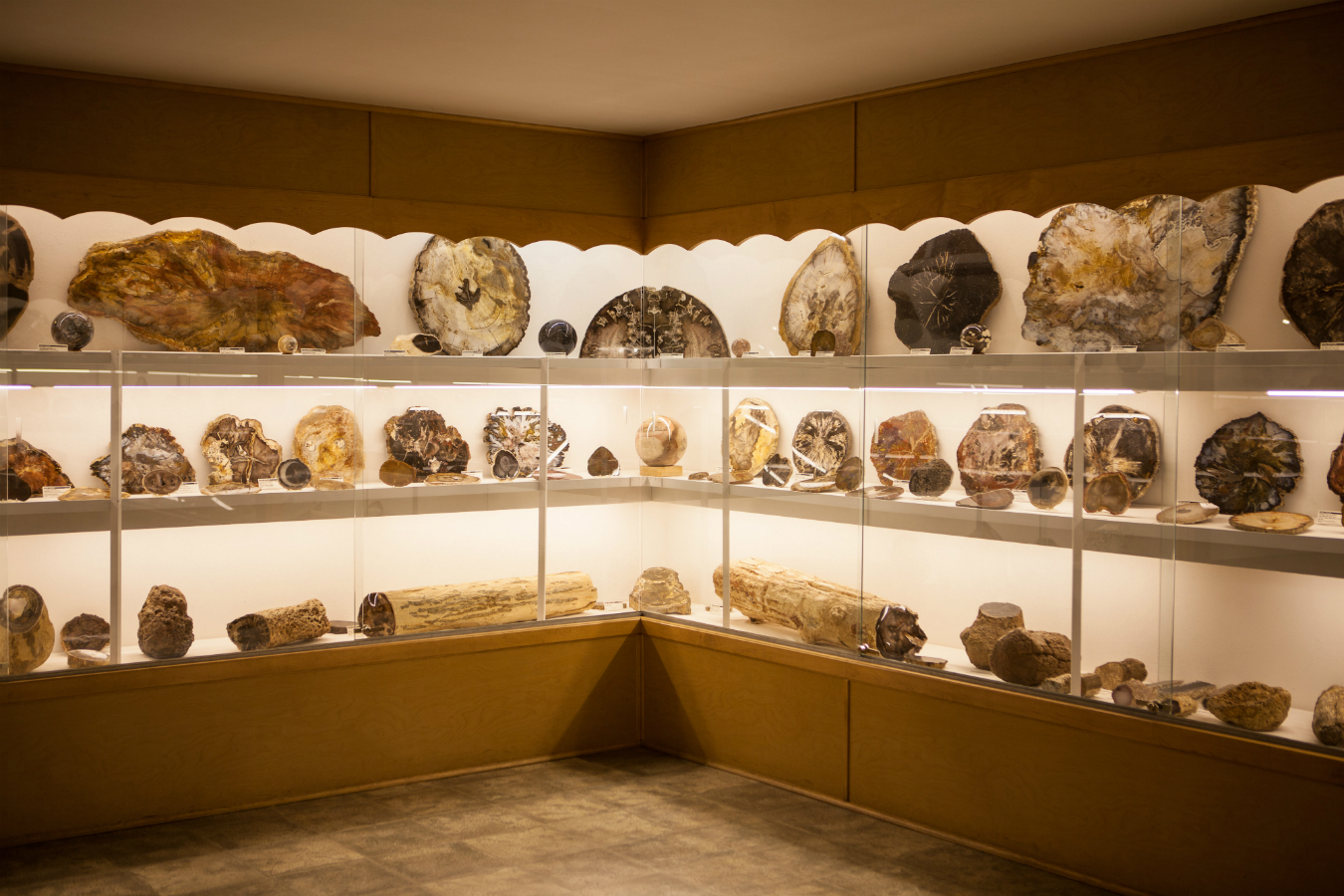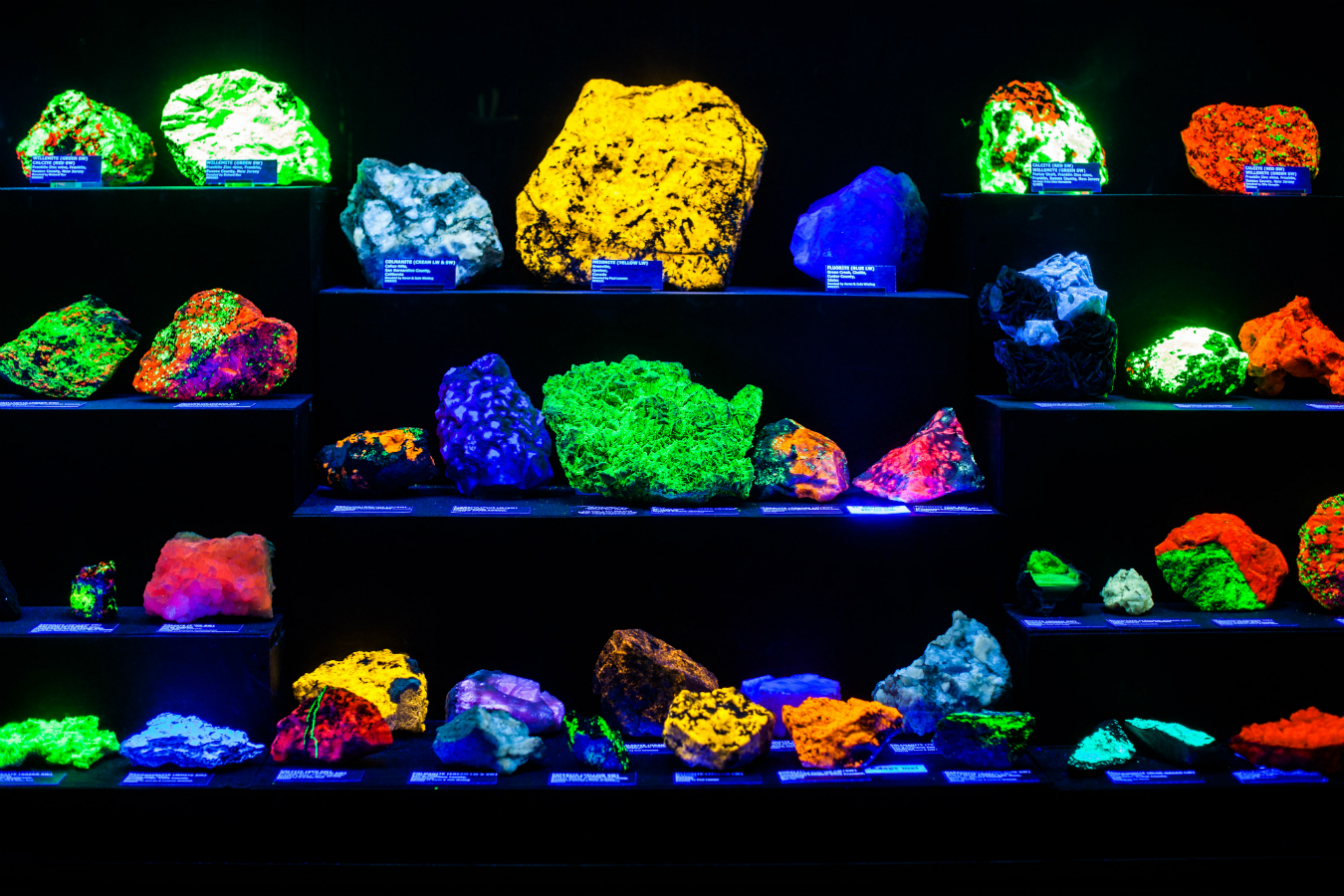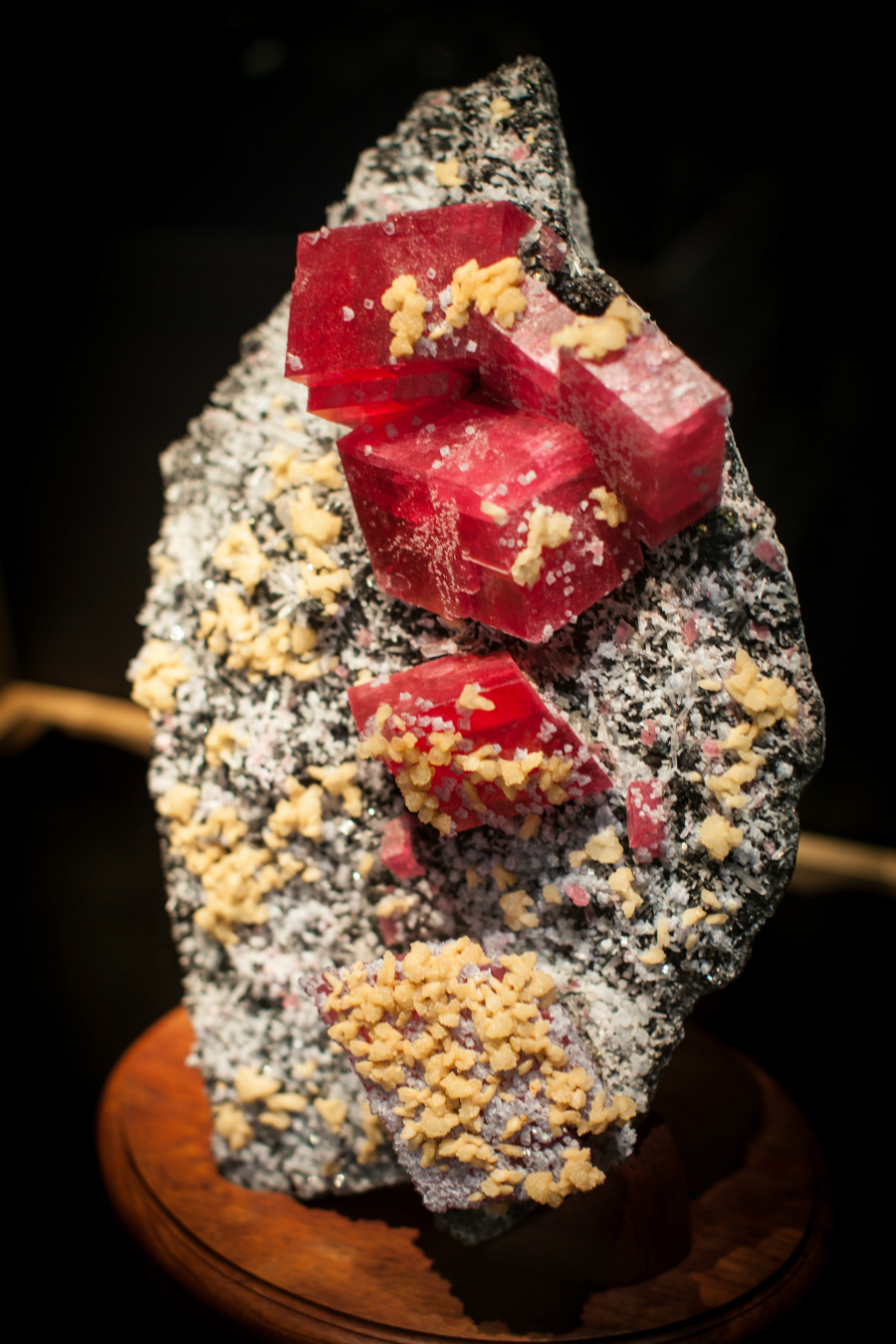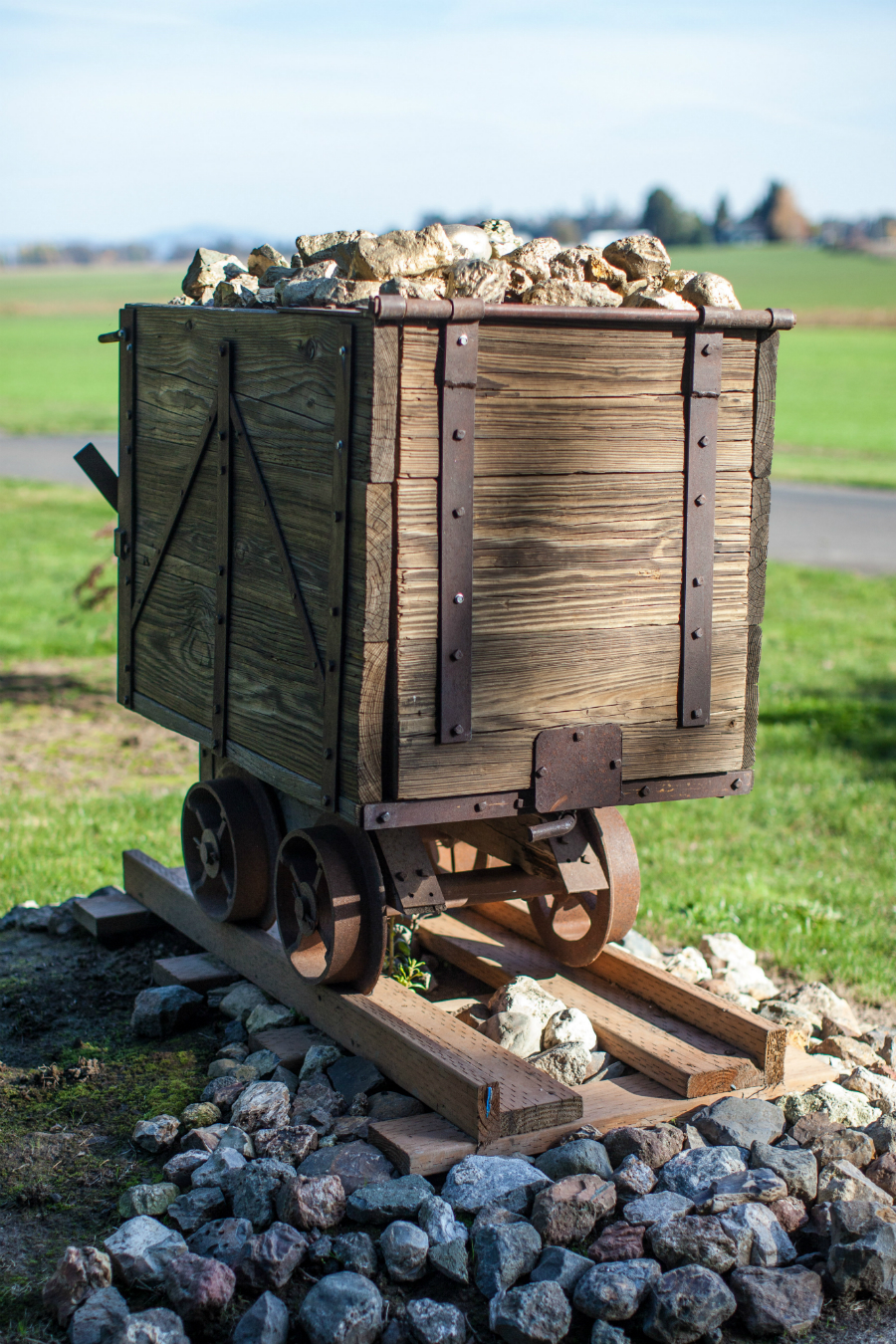“We’re going to a rock museum.”
The notion sounds a bit bizarre, perhaps slightly nerdy—a collection of rocks? Really?—but Washington County’s Rice Museum of Rocks & Minerals ends up being an informative and captivating experience for even the most uninspired.
It all began in 1952, when Richard and Helen Rice began custom-building their dream house near the small town of Hilsboro. Long-time avid rock collectors, the couple designed the basement of their home to be a showroom for their growing assortment, complete with built-in light-up display cases. Up a windy driveway surrounded by trees, the house still sits, and is in fact on the National Registry of Historic Places. With Coconino sandstone on the exterior and quilted maple and myrtle wood inside, the home design remains frozen in its original decade, and is reason enough to visit (and it’s only a 25-minute drive from downtown Portland).
But of course, there are the rocks. An almost unfathomable amount of rocks—it is the largest museum of its kind in North America. Though the Rices are no longer alive to care for it (they both died in 1997), the museum has become something of a sparkling mineral in its own right. Every room in the two-floor home has been converted into a gallery, allowing curators to include thousands of minerals, rocks, meteorites, fossils, petrified wood panels, gemstones, and crystals, some of which incredibly rare. The crown jewel of the museum is the alma rose rhodochrosite, a 70-pound crystal from Colorado that is worth seven figures (the team used to take it to trade shows, but no longer does, because the insurance costs are just that astronomical). There is the Rainbow Gallery, which shows visitors how brilliant a natural mineral looks under shortwave and longwave ultraviolet lighting; the Lapidary Arts exhibit includes precious jewels and intricate, ornate stone carvings.
Museum director Julian Gray rattles off fact after fact as he zips through the various exhibits, highlighting certain beloved acquisitions. He stops at the meteorite display and points to a gigantic sample. “If you can pick it up, you can take it home,” he jokes. The museum was named an Affiliate of the Smithsonian Institution in 2015, recognizing its work in the promotion and facilitation of ecology education.
And while rock collecting does tend to lean towards the geeky, stones and crystals have experienced somewhat of a cultural revival lately with the popular belief that the certain kinds hold different healing powers. When asked if he believes in this, Gray immediately shakes his head. “I’m a scientist,” he says. He holds faith in the facts. Then he thinks about it for a second, and adds: “But I’m around rocks every day, and I feel better.”
__________
Read more Travel stories here.












